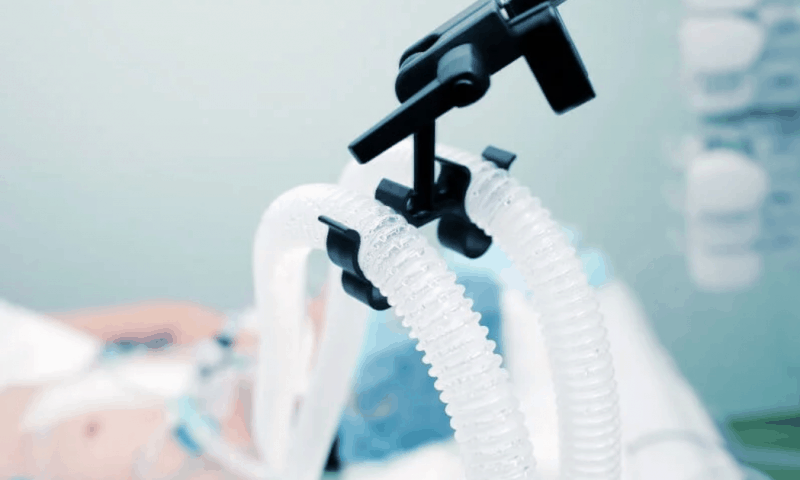After breathing through an implanted tube in her throat for six years, a woman underwent the first successful human trachea transplant, in an 18-hour procedure performed by surgeons at Mount Sinai.
To make it happen, surgeons had to overcome the technical challenges of keeping the donated organ alive with adequate blood flow, a dilemma that took three decades of research to solve, the hospital said Wednesday.
The hospital described the windpipe replacement as a new, viable treatment for thousands of people that may be born with tracheal birth defects, or who may have an airway damaged by burns, tumors or intubation, such as patients with COVID-19 who have been placed on a ventilator.
Eric Genden, lead surgeon on the project, described the procedure’s protocol as “reliable, reproducible and technically straightforward,” and Mount Sinai’s transplant unit has now launched the world’s first airway reconstruction program, with plans to offer the surgery to patients internationally to help them breathe and speak normally.
Until now there had been no long-term therapies for injuries to the longest segment of the trachea, which connects the voice box in the throat down to the lungs. More than just a simple tube, the organ’s short, hair-like lining of cilia help clear airborne pollutants while responding to changes in air pressure.
“For years, the medical and scientific consensus has been that trachea transplantation could not be done because the organ’s complexity made revascularization impossible, and every previous attempt to perform in-human transplantation ended in failure,” said Genden, who helped lead a team of more than 50 specialists, nurses and residents through the groundbreaking procedure, completed in January.
The transplant recipient, a 56-year-old female social worker from New York City, had severe tracheal damage following repeated intubations after suffering an asthma attack. Several surgical attempts to reconstruct her trachea failed, causing further damage and ultimately increasing the risk that her windpipe might collapse entirely.
After placing the new trachea, surgeons reconnected the series of small blood vessels feeding the organ, while using portions of the neighboring esophagus and thyroid glands to help support the blood supply.
“Despite extensive research on the vascular supply to the organ using human and animal models, there is no real way to fully prepare for conducting a first-ever in-human transplantation such as this,” Genden, the Isidore Friesner Professor and chair of otolaryngology for the health system, said in a release.
“For example, we had no guide for how well the graft would tolerate transplantation, so we worked very quickly… Seeing the graft come alive and knowing that the organ was well vascularized was an amazing experience,” said Genden, who previously performed partial tracheal transplants that combined donated cartilage with the patient’s own tissue, compared to a whole windpipe graft.
In the months that followed, the patient showed no complications or signs of organ rejection, the hospital said.
“It is particularly timely given the growing number of patients with extensive tracheal issues due to COVID-19 intubation,” Genden added. “Because of both mechanical ventilation and the nature of the COVID-19-induced airway disease, tracheal airway disease is precipitously increasing, and now we have a treatment.”

